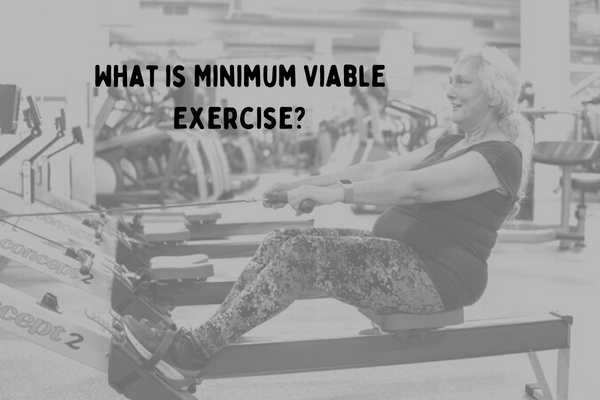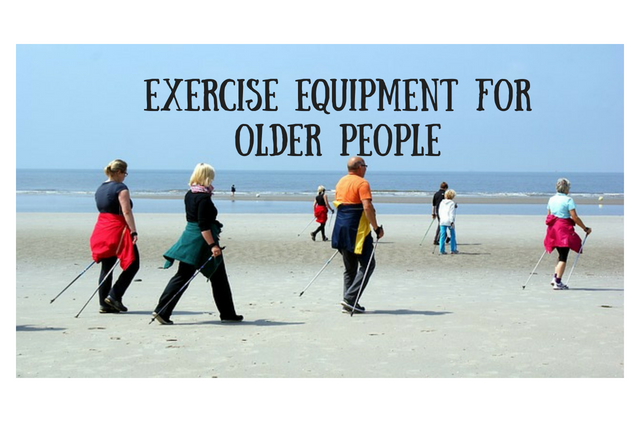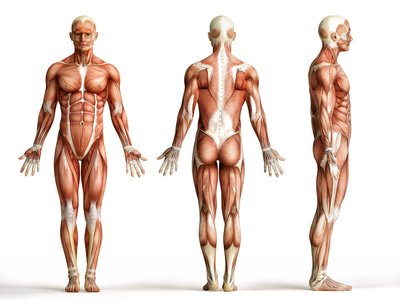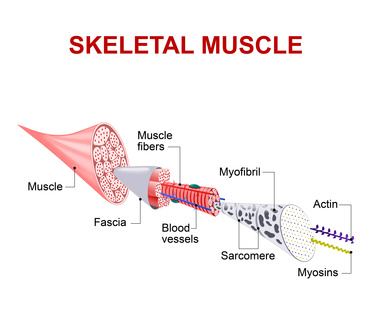Minimum Viable Exercise

What is the Smallest Amount of Exercise for a Healthy Life?
Exercise has diminishing returns for your health.
After a certain point – which varies with age, fitness level and other health markers – each minute of exercise you do adds a smaller and smaller benefit. To pick an silly example, someone doing an hour of light jogging on a treadmill each day is unlikely to get more benefit by upping this to 90 minutes.
That said, going below a minimum amount of exercise is bad for your long-term health.
Both the NHS and WHO put this at 150 minutes weekly. Within that 2.5-hour window, there are three different types of exercise to do.
This page covers minimum viable exercise.
Remember that your health, age, and physical fitness all come into play. If you have any conditions or are frail / recovering from injury – do make sure you speak with your GP.
 Minimum Viable Exercise: What the Health Organisations Recommend
Minimum Viable Exercise: What the Health Organisations Recommend
Each country has it’s own guidelines for the smallest amount of exercise you should be doing.
They are remarkably similar – 150 minutes is the sweet spot. The recommendations vary with age, and in the types of exercise recommended.
World Health Organisation:
- Children (five to seventeen years old): An hour per day of moderate to vigorous intensity exercise.
- Adults (eighteen to sixty-four): Either 150 minutes of moderate aerobic activity per week, or 75 minutes of vigorous activity. Include muscle strengthening at least two times per week.
- Older Adults (sixty-five +): As above, with the muscle strengthening exercises changed to ‘it is recommended’.
More details from the WHO here.
National Health Service:
While the overall recommendation for adults matches the WHO at 150 minutes, there are more details in the NHS advice.
- Spread the exercise over 4-5 days per week, or every day.
- Make sure you strengthen all the major muscle groups.
- Several short sessions of very vigorous intensity activity
The NHS also provide examples of what is considered moderate and what is vigorous exercise. Examples of moderate exercise include brisk walking, riding an exercise bike and playing doubles tennis. Vigorous activities are running, swimming and sports.
19-64 NHS guidelines here.

Strength Training: Why This is Important and How to Do It Safely?
As we age, sarcopenia becomes a problem.
Over time, muscle tone and size shrinks. This leads to problems with movement, balance, and strength. As people are unable to partake in physical activity, the sarcopenia gets worse. This creates a cycle or wasting, which eventually leads to frailty – where a fall can be dangerous.
Even if you are only middle-aged, it is important to keep muscle tone.
It really is a case of ‘use it or lose it’.
It is super-important that you do muscle strengthening exercises safely. Making a mistake will have the opposite effect, you won’t be able to use your muscles while you recover – and they will naturally weaken.
Examples of Muscle Strengthening Exercises:
- Resistance Band Exercises: These are like big, tough elastic bands. You can pick the size which suits your fitness level. They are versatile enough to cover a range of muscle groups.
- Body Weight Exercises: Common examples are push-ups, planks, squats (or wall squats), or lunges. These exercises will also help to improve your balance.
- Free Weights: Barbells, dumbbells and kettlebells are all popular choices for exercising at home. Adjust the weights to a minimum to start, and ensure you have the right technique before adding more.
- Yoga and Pilates: Both will strengthen your core muscles, improving balance at the same time as boosting you muscle strength.
As you can see, you don’t need to be a bodybuilder – or invest in an expensive gym membership. In fact, adding just a few muscle strengthening exercises per day has huge health benefits.

Exercise Snacking: A Great Way to Boost Minimum Viable Exercise
I have an exercise breakfast – then do my main workout in the early evening each day.
This ‘snack’ is pre-shower. It is 30 push-ups and a one-minute plank. If I’m in the mood, I’ll add some squats or lift a free weight.
With no pressure to ‘go for it’, this snack is an ideal way to add exercise without needing to schedule anything. Two 10-minute brisk walks a day, using a stepper while waiting for the kettle to boil, or taking the stairs instead of a lift all count as exercise snacks.

Wrapping Up: How Does Your Routine Compare to Minimum Viable Exercise?
Making exercise into a habit has worked wonders for me – and it will for you too.
The minimum to stay healthy is not that hard to reach. It is simply a matter of mixing in moderate (walking, cycling), vigorous (running, sports) and strengthening (resistance bands, body-weight) through the week.
Once you get to 150 minutes, and mix this with a healthy diet, low toxins (alcohol, sugar) and great sleep, you’ll feel healthier, more positive and in just the right frame of mind to add some more exercise!
More Popular Pages this Month: